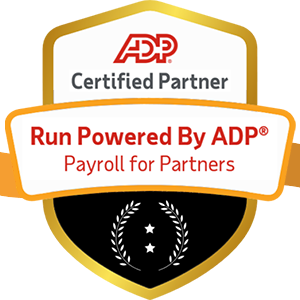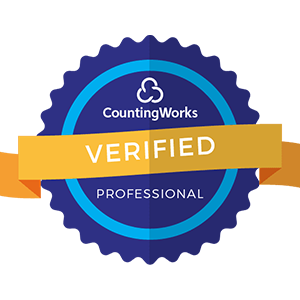In today's rapidly evolving business landscape, companies are facing an unprecedented challenge: how to effectively leverage their most valuable asset — their people. As organizations grapple with the complexities of a multi-generational workforce, shifting skill requirements, and the constant need for innovation, a new solution has emerged: corporate talent marketplaces.
These internal platforms are revolutionizing the way companies develop and deploy talent, offering employees the opportunity to explore new roles, acquire diverse skills, and take charge of their career growth. By fostering a culture of continuous learning and agility, talent marketplaces are not only transforming individual careers but also driving organizational success in the face of disruption.
In this article, we'll dive deep into the world of corporate talent marketplaces, exploring their benefits, best practices, and the impact they're having on the future of work.
Why Talent Marketplaces Matter

Imagine a world where employees are no longer confined to a single role or department, but instead have the freedom to explore new opportunities within their organization. Where skills are valued over titles, and career growth is driven by curiosity, passion, and the desire to make a meaningful impact. This is the promise of corporate talent marketplaces.
At their core, talent marketplaces are designed to address several key challenges facing modern organizations:
- Skills Gaps: As technology advances and business needs evolve, companies often struggle to find the right talent with the necessary skills. Talent marketplaces help bridge this gap by enabling employees to develop new skills and apply them to projects across the organization.
- Employee Engagement: When employees feel stuck in their roles or lack opportunities for growth, engagement and productivity suffer. Talent marketplaces empower employees to take control of their careers, fostering a sense of ownership and purpose.
- Organizational Agility: In a rapidly changing business environment, organizations need to be able to quickly adapt and respond to new challenges. By creating a fluid talent pool, talent marketplaces enable companies to assemble the right teams for the right projects at the right time.
- Diversity and Inclusion: Talent marketplaces level the playing field, providing equal access to opportunities regardless of background, tenure, or location. This helps break down silos and promotes a more diverse and inclusive workplace.
The Anatomy of a Talent Marketplace
So, what does a corporate talent marketplace actually look like? While the specifics may vary from company to company, most talent marketplaces share several key components:
- Skills Inventory: At the heart of every talent marketplace is a comprehensive database of employee skills, experiences, and aspirations. This inventory is typically built through a combination of self-reporting, manager feedback, and data from HR systems.
- Project Marketplace: Employees can browse and apply for short-term projects or "gigs" that align with their skills and interests. These projects may be within their current department or in entirely different areas of the organization.
- Learning and Development: Talent marketplaces often integrate with learning management systems, providing employees with access to training and development opportunities that help them acquire new skills and prepare for future roles.
- Career Pathing: By analyzing employee skills and project history, talent marketplaces can suggest personalized career paths and recommend next steps for growth and development.
- Analytics and Insights: Talent marketplace platforms generate valuable data on employee skills, interests, and performance, which can inform workforce planning, succession management, and other strategic HR initiatives.
Best Practices for Building a Successful Talent Marketplace

Implementing a corporate talent marketplace is not a one-size-fits-all endeavor. To ensure success, organizations must carefully consider their unique needs, culture, and goals. However, there are several best practices that can guide the process:
- Start with a Clear Vision: Before launching a talent marketplace, it's essential to define the desired outcomes and align them with the organization's overall strategy. This vision should be communicated clearly to employees, managers, and leadership.
- Engage Stakeholders Early and Often: Building a talent marketplace requires buy-in from across the organization. Engage key stakeholders, including HR, IT, and business leaders, to ensure the platform meets their needs and addresses their concerns.
- Focus on User Experience: The success of a talent marketplace hinges on employee adoption and engagement. Invest in a user-friendly interface, provide clear guidance and support, and continuously gather feedback to improve the user experience.
- Cultivate a Culture of Learning: Talent marketplaces thrive in organizations that value continuous learning and development. Encourage employees to explore new skills and opportunities, and recognize and reward those who do.
- Measure and Iterate: Regularly assess the impact of your talent marketplace using a range of metrics, such as employee engagement, skill development, and project outcomes. Use these insights to refine and optimize the platform over time.
The Future of Work: Talent Marketplaces in Action

As talent marketplaces gain traction, we're seeing a growing number of companies embrace this approach to talent management. Here are a few examples of organizations leading the way:
- Unilever: The consumer goods giant launched its "Flex Experiences" program, which allows employees to work on short-term projects outside their normal roles. The program has been a resounding success, with over 10,000 employees participating in more than 1,000 projects.
- Schneider Electric: The global energy management company created an internal "Open Talent Market," which matches employees with projects based on their skills and interests. The platform has helped Schneider Electric improve employee engagement, reduce attrition, and accelerate innovation.
- GE: The industrial conglomerate's "GE Store" talent marketplace enables employees to share their skills and experiences across the company's diverse business units. The platform has helped GE break down silos, foster collaboration, and drive organizational agility.
As these examples demonstrate, talent marketplaces are not just a passing trend, but a fundamental shift in how organizations approach talent management. By empowering employees to take control of their careers and enabling organizations to quickly adapt to changing business needs, talent marketplaces are poised to reshape the future of work.
Conclusion: Embracing the Talent Marketplace Revolution
In a world where change is the only constant, organizations that can effectively harness the power of their people will be the ones that thrive. Corporate talent marketplaces offer a powerful tool for unlocking the full potential of your workforce, driving engagement, innovation, and agility.
However, building a successful talent marketplace requires more than just technology. It requires a fundamental shift in mindset, a willingness to challenge traditional hierarchies and silos, and a deep commitment to employee growth and development.
As you embark on your own talent marketplace journey, remember that the path may not always be smooth. There will be challenges and setbacks along the way. But by staying true to your vision, engaging your people, and continuously learning and adapting, you can create a talent marketplace that not only transforms your organization but also empowers your employees to achieve their full potential.
The talent marketplace revolution is here. Are you ready to embrace it?






